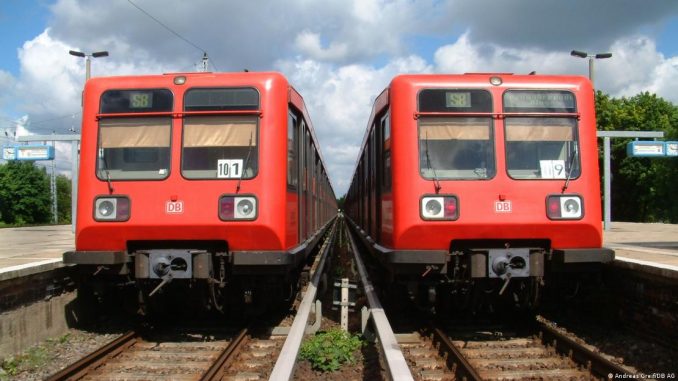
Berliners used to call them “Coke Cans”: The Model Series 485 trains spent decades faithfully clacking along the tracks on Berlin’s S-Bahn rapid transit system. Now the last 22 of the old trains — originally commissioned and built in the German Democratic Republic (GDR) back when a wall divided Berlin, and Germany, into East and West — are on their way out.
On November 12, the old 485s will take their last runs through the city before being retired.
Germany is actually modernizing the entire Deutsche Bahn rail network as part of a move to make train travel more energy efficient and help its climate targets.
The moves can’t come soon enough for long-suffering Deutsche Bahn customers, who complain that Germany’s reputation for good trains that run on time has been suffering for some time now, with frequent delays and cancellations and an antiquated rolling stock of slow cars that too often break down.
But back in the 1970s, when East Germany’s Deutsche Reichsbahn first commissioned them from a factory in Hennigsdorf, north-west of Berlin, the “Coke Can” trains were cutting-edge technology.
Registered in East Berlin as the 270 series (they were rebranded 485s after moving west), the cars boasted a light aluminum shell and a state-of-the-art braking system was set up to recover energy and generate electricity to help power the train.
The new models did a few test runs in the late 1980s but, by the time a full fleet was ready to roll, it was early 1990. The Berlin Wall had fallen and the process of German reunification was well underway. The freshly-lacquered cars had the run, not just of Berlin’s eastern sector, but of the entire city.
The fleet has gone through a few changes since then including a change in style, as, starting from 2002, the cars’ bright crimson hue gave way to the Berlin S-Bahn’s iconic burgundy red and ocher combo. But beyond the aesthetic changes, the Model 485 has proven remarkably robust. Berlin originally planned to phase them out in the mid-2000s but only truly began replacing them with the new 483 and 484 models last year.
Read more here www.dw.com